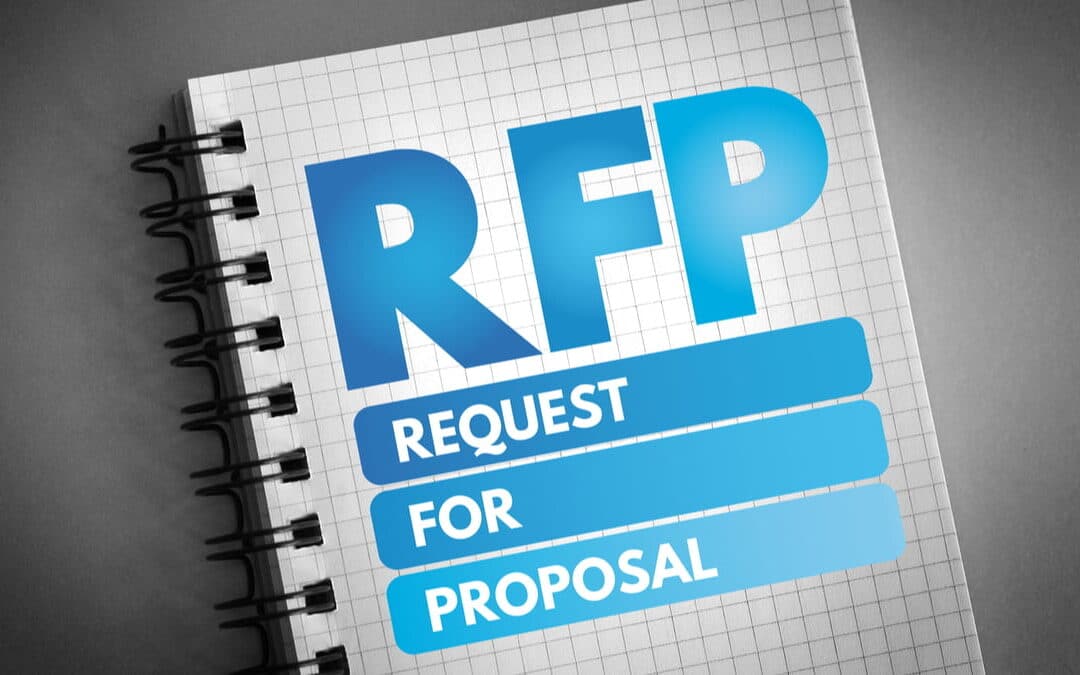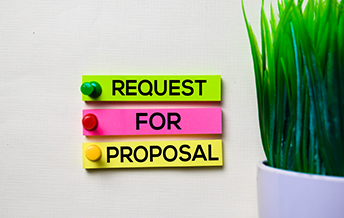Successful request for proposal (RFP) responses are a way for your organization to land important sales and contracts. Writing an effective RFP response is a critical tool for gaining business. Statistics show that the average RFP receives four responses. This means that an RFP is far from the final formality that many people assume it to be with B2B sales. However, it does mean that your organization is in the spotlight, with only a few other competitors. Receiving an RFP is an opportunity for your organization to shine. You can show your prospective client how aware you are of their needs and how they’ll be uniquely met by your organization with a well-written RFP response.
In contrast, however, a poorly written RFP response can destroy an otherwise promising deal. The care and attention taken with the RFP response will show the prospective client the type of care and attention they’ll receive from your organization. In many cases, the RFP response is the make or break it factor in a business deal. We will look at the difference between an RFP and an RFQ, the eight simple steps for writing a successful RFP response, and the best software to help with your RFP responses.
What is the Difference Between an RFP and an RFQ?
Businesses often do a lot of comparison shopping before they sign contracts for services or buy products from another business. RFPs and requests for quotes (RFQs) are how they do this comparison shopping. RFPs are longer, more formal documents that outline the needs of the client, and the deliverables being offered. They include detailed plans and strategies for implementation. RFQs however, are formal requests for the price of goods or services. These are used when the business already knows exactly what they would be purchasing, has a budget in mind, is ready to purchase, and is simply seeking clarification on price. RFQs will include the specific costs, payment terms, and product specs or service details. For organizations that know what products or services they’re interested in and who don’t need a supported contract or service plan, then an RFQ is a more effective document than an RFP.How to Write an RFP Response in 8 Simple Steps
Here are 8 ways to make your RFP response a success.1.Focus on compatible deals
This might seem a little obvious, but many organizations waste countless hours writing RFP responses for deals that are not a good match for them. Not only are organizations unlikely to win a contract this way, but if they do, they are ill-equipped to fulfill it. The smart thing to do is to treat RFP responses like the investments that they are. It takes many hours to craft a solid proposal, and you’ll have a better return if they are for deals that you have a lot of information on, seem well-favored to win, and are for serious prospects.2. Craft an easy-to-read RFP response
While there are a lot of details in your RFP response, do your company and your reader a favor and make the response easy to read. Your proposal will receive more time and attention if it uses reader-friendly language and eschews lots of technical jargon. Avoid unnecessary acronyms and fancy words, both of which can come off as pretentious. Use simpler sentence structures, and avoid redundancy and filler. Making your writing as concise as possible is also beneficial.3. Use a formal cover letter
Make a great first impression with a formal cover letter. They are elegant, timeless, and a professional way to set your RFP ahead of the pack. Cover letters act as a formal introduction and might include:- What you know about their project goals and requirements.
- Specific details about how your organization will solve their problem.
- Focus on why your organization wants to work together.
4. Write an executive summary of the proposal
For the next page after your cover letter, include an executive summary. If you know the specific person behind the RFP you are replying to, you can tailor this section to this person. Even if you don’t know them personally, you can do some research about their company and their role. This will help you speak to the company’s unique needs, whether they are starting to acquire new business or are looking to change up existing partnerships. This summary should include:- A summary of how your implementation plan meets their needs.
- What your organization offers that your competitors do not.
- Examples of your company’s experience and qualifications.
5. Include details about your plan for implementation
In this section, you will include information about how your organization will accomplish the potential client’s goals. This is also called the implementation plan. Here you will discuss what exactly will be provided to the client (deliverables) and the ways and means your team will accomplish these goals. Details to include are:- A specific timeline.
- What are the specific deliverables?
- Who the client will be working with on your team.
- The plan for content or deliverables.
Talk about the partnership contract
Towards the end of your RFP response, it’s a good idea to give pertinent information about the contract you are offering. This information will likely include:- A complete breakdown of costs.
- What support your organization will offer post-project completion.
- A complete contract that is ready for them to sign.
1. Include references and focus on success stories with other clients
As you close out your RFP response, you can boost your potential client’s confidence in your organization by including a list of solid references. A glowing recommendation from a peer can do wonders in persuading a potential client to choose you. This is also a great way for your prospective client to get a taste of your organization’s excellent reputation. Another way to sway them in your favor is with examples of past success stories. Prove what your organization is capable of with solid examples and references. Your prospective client can now visualize the results your organization can produce for them. This is especially effective if you’ve had previous clients in a similar industry to the client you are pitching.2. Edit, edit, edit
Those words weren’t written for emphasis, but rather as a description of your editing process. Some editing tips: Have a second set of eyes do one of the edits or even more than one person. Editing this document can be a team process. Also, consider using read-aloud features to hear your document out loud. This can help you find simple grammatical errors as well as places that lack clarity and could use a re-write. It’s a simple fact—grammar and spelling errors in a document like this can completely tank your organization’s chances of landing a contract. Let’s say there are two final contenders, and one of the RFP responses has spelling errors. Your potential client will choose the company without any typos in their RFP response.Find RFP Response Support with Expedience Software
Take the variables out of your RFP responses, and create compliant, persuasive RFP responses with our top-of-the-line RFP and proposal software. Elevate your RFP responses above the competition with Expedience software. We promise it is so easy to use, your team will happily take advantage of our program. In fact, they already know how to use our software. It’s built into Microsoft Word, so we work where you work. In addition, to help with RFP responses and proposals, our software includes:- Checkbox Proposal Template
- Excel and Portal RFP Responses
- Statements of Work (SOWs)
- Graphics, Video, and more
- PowerPoint and Outlook compatible
- Centralized Content Library
- 100% Formatted and Branded






